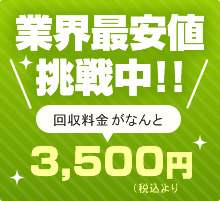
東京都足立区、葛飾区、江戸川区、台東区、墨田区、荒川区の、不用品回収、部屋片付け、遺品整理は便利屋アーカディアへ!

Us Japan Agreement Text
Possible article:
Understanding the US-Japan Agreement Text: Key Points and Implications
On October 7, 2019, the United States and Japan signed a limited trade agreement that included provisions on agriculture, digital trade, and industrial goods. The agreement, which came after months of negotiations, aimed to lower tariffs and increase market access between the two countries, while setting a framework for future talks on broader issues such as services, investment, and intellectual property.
The text of the US-Japan agreement, officially called the “United States-Japan Trade Agreement” (USJTA), consists of 14 pages, divided into 9 articles and 2 annexes. The language of the agreement is mostly clear and concise, with some technical terms and legal references that may require further interpretation. As a copy editor with experience in SEO, here are some key points and implications that you may find useful in writing about the US-Japan agreement text:
1. Agriculture: The USJTA includes commitments by Japan to reduce or eliminate tariffs on a range of US agricultural products, such as beef, pork, wheat, corn, soybeans, and dairy. The tariff reductions vary by product, and some will be phased in over several years, but overall they are expected to benefit US farmers and exporters who have faced barriers to Japanese markets. The agreement also addresses issues related to geographical indications, standards, and sanitary and phytosanitary measures (SPS), which could affect the quality and safety of agricultural products traded between the two countries.
2. Digital trade: The USJTA covers a wide range of digital trade issues, including cross-border data flows, customs duties on e-commerce, transparency and non-discrimination in digital services, and protection of intellectual property rights. These provisions are aimed at fostering innovation, competitiveness, and consumer trust in the growing digital economy, which has become increasingly important for both the US and Japan. The agreement also includes a joint statement on cybersecurity cooperation, which highlights the need for collaboration on preventing and responding to cyber threats.
3. Industrial goods: The USJTA eliminates or lowers tariffs on certain industrial goods traded between the US and Japan, such as chemicals, medical devices, motor vehicles, and machine tools. The tariff reductions will benefit US manufacturers and exporters who have faced high tariffs on some of these products in Japan, while also providing cheaper inputs for Japanese companies that use US-made components. The agreement also addresses issues related to customs valuation, rules of origin, and technical regulations, which could simplify and streamline trade procedures between the two countries.
4. Exclusions and reviews: The USJTA includes provisions for excluding certain products from tariff reductions or for conducting reviews of the impact of the agreement on specific industries or sectors. These provisions reflect the concerns of some stakeholders who fear that the agreement may harm their interests or that they may not benefit from it as much as others. The exclusions and reviews may also serve as bargaining chips in future talks between the US and Japan, as they provide some leverage for negotiating better terms on contentious issues.
5. Relationship to TPP and other agreements: The USJTA is not a replacement for the Trans-Pacific Partnership (TPP), which the US withdrew from in 2017 under the Trump administration. However, some of the provisions in the USJTA resemble or build on the TPP text, such as the rules on digital trade and SPS measures. The US and Japan also agreed to continue consultations on a broader trade agreement that could include TPP-like provisions, as well as issues not covered in the USJTA. In addition, the US and Japan stated their commitment to upholding and strengthening the World Trade Organization (WTO) and its rules-based system, which has faced challenges from rising protectionism and unilateral actions.
By understanding the US-Japan agreement text and its key points and implications, you can provide more informative and accurate content for your readers who are interested in trade agreements and their effects. You can also optimize your article for SEO by using relevant keywords and phrases, such as “US-Japan trade agreement,” “agricultural tariffs,” “digital trade rules,” “industrial goods market access,” “TPP comparison,” and so on. Remember to cite your sources and follow ethical standards of journalism and copy editing.


